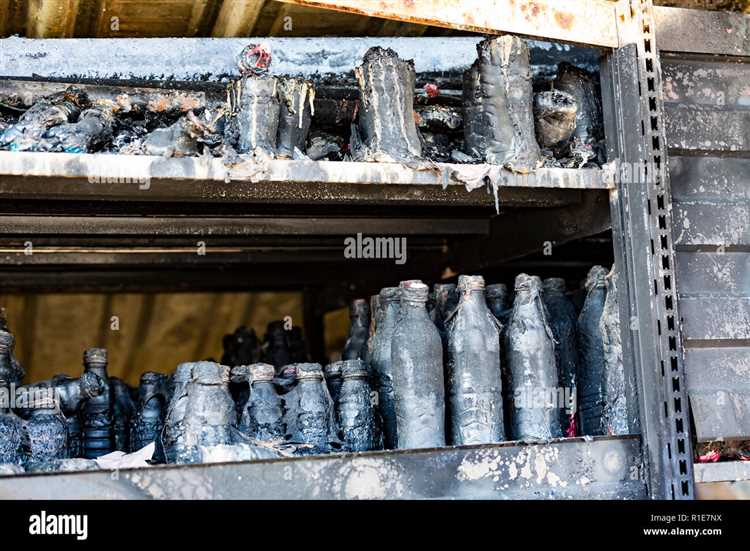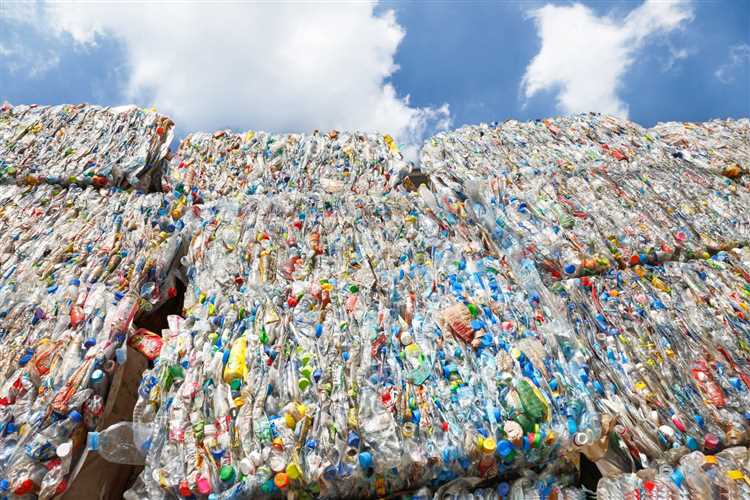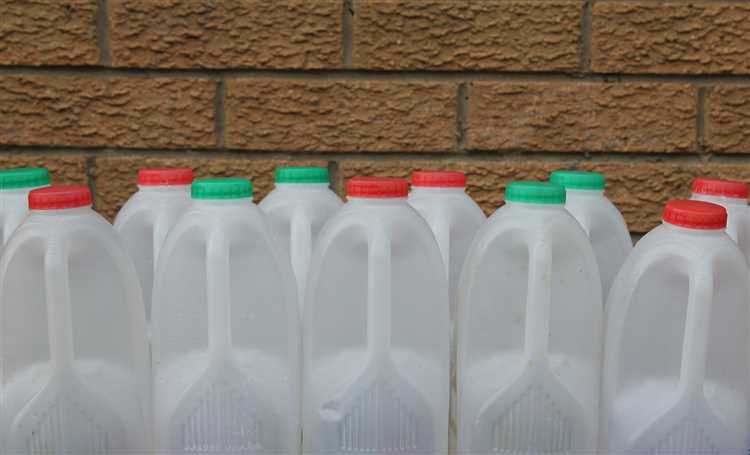
Plastic milk bottles are a common household item that many people use and dispose of regularly. They are made from a type of plastic called high-density polyethylene, or HDPE, which is known for its durability and resistance to chemicals. However, when it comes to disposing of plastic milk bottles, many people wonder if it is safe to burn them.
Burning plastic can release harmful fumes and chemicals into the air, posing risks to both human health and the environment. In the case of plastic milk bottles, burning them can release toxic chemicals such as dioxins and furans, which can have serious long-term health effects.
So, can plastic milk bottles be burned? The answer is no. It is not safe or recommended to burn plastic milk bottles. There are more environmentally friendly ways to dispose of them, such as recycling or reusing them for other purposes. Recycling plastic milk bottles helps to reduce the amount of plastic waste in landfills and prevents the release of harmful chemicals into the environment.
- Can Plastic Milk Bottles be Burned?
- The Dangers of Burning Plastic
- Safe Disposal Methods
- Recycling Plastic Milk Bottles
- Environmental Impact of Plastic Burning
- Alternatives to Burning Plastic Milk Bottles
- 1. Recycling
- 2. Reuse
- 3. Responsible Disposal
- Benefits of Recycling Plastic Milk Bottles
- How to Properly Dispose of Plastic Milk Bottles
- 1. Rinse the Bottle
- 2. Check with Local Recycling Programs
- 3. Sort into the Correct Recycling Bin
- 4. Consider Reusing the Bottles
- 5. Reduce the Use of Plastic Bottles
- Advantages and Disadvantages of Burning Plastic Milk Bottles
- Advantages
- Disadvantages
- Question-Answer:
- Can plastic milk bottles be burned?
- Is it safe to burn plastic milk bottles?
- What should I do with empty plastic milk bottles?
- Why is burning plastic harmful?
Can Plastic Milk Bottles be Burned?
Many people wonder if plastic milk bottles can be burned as a way to dispose of them. While burning plastic can seem like a convenient solution, it is important to understand the potential dangers and environmental impacts before considering this method.
The Dangers of Burning Plastic
Burning plastic milk bottles can release harmful toxins into the air and create pollution. When plastics are burned, they can release dioxins, furans, and other toxic chemicals that can have serious health effects when inhaled or ingested.
Not only can burning plastic be harmful to human health, but it can also contribute to air pollution. The release of toxic chemicals into the air can worsen air quality and have negative impacts on the environment.
Safe Disposal Methods
Instead of burning plastic milk bottles, it is recommended to dispose of them properly through recycling or appropriate waste management systems. Recycling plastic bottles helps to conserve resources and reduce the demand for new plastics.
Plastic milk bottles can usually be recycled alongside other plastic containers. Check with your local recycling facilities to ensure you are following the correct recycling guidelines in your area.
If recycling is not available, you can also consider reusing plastic milk bottles for other purposes. They can be used for storing liquids, gardening, or as arts and crafts materials.
It is important to be mindful of the environmental impact and potential health risks associated with burning plastic milk bottles. Choosing safe and eco-friendly disposal methods is crucial to protect our health and the environment.
Recycling Plastic Milk Bottles
Plastic milk bottles are commonly used containers for storing and transporting milk. These bottles are made from high-density polyethylene (HDPE), a type of plastic that can be easily recycled. Recycling plastic milk bottles has several benefits, such as reducing waste and conserving resources.
When plastic milk bottles are recycled, they are collected and sorted based on their type of plastic. HDPE milk bottles are then cleaned and shredded into small pieces. These pieces are then melted down and used to make new products, such as plastic lumber, toys, and other plastic containers.
Recycling plastic milk bottles not only reduces the amount of plastic waste that goes to landfills but also helps conserve energy. The process of recycling HDPE milk bottles requires less energy compared to producing new plastic from raw materials. It also helps reduce the demand for oil, which is used to produce plastic.
Additionally, recycling plastic milk bottles helps to reduce pollution. When plastic waste is burned or sent to landfills, it can release harmful chemicals and greenhouse gases into the atmosphere. By recycling these bottles, we can prevent these pollutants from entering the environment.
Many communities have curbside recycling programs that accept plastic milk bottles. These programs make it easy for individuals to recycle their empty bottles. Alternatively, there are recycling centers and drop-off locations where plastic milk bottles can be taken for recycling.
It is important to note that not all plastic bottles can be recycled. It is crucial to check the recycling guidelines in your area to ensure that plastic milk bottles are accepted in your local recycling program. Properly recycling plastic milk bottles can help contribute to a more sustainable and environmentally friendly future.
Environmental Impact of Plastic Burning
Burning plastic milk bottles can have significant negative environmental impacts. When plastic is burned, it releases harmful toxins and pollutants into the air, including dioxins, furans, and other volatile organic compounds (VOCs).
These emissions are known to contribute to air pollution and can have serious health effects on both humans and animals. Inhaling the fumes from burning plastics can irritate the respiratory system, causing respiratory problems, such as coughing, wheezing, and shortness of breath. Long-term exposure to these toxins may also increase the risk of developing certain types of cancer.
In addition to air pollution, burning plastic milk bottles also contributes to the production of greenhouse gases, such as carbon dioxide (CO2) and methane (CH4). These gases are major contributors to climate change and the global warming of the planet. The burning of plastics adds to the overall carbon footprint and exacerbates the already serious issue of climate change.
Furthermore, the disposal of plastic milk bottles through burning creates ash and residue that can contaminate soil and water sources. These pollutants can seep into groundwater or be carried by rainwater runoff into nearby rivers or streams, posing a threat to aquatic ecosystems and potentially contaminating drinking water supplies.
Given the significant environmental and health risks associated with burning plastic milk bottles, it is crucial to properly recycle and dispose of them through appropriate recycling facilities. This helps to reduce air pollution, conserve resources, and protect the environment for future generations.
Alternatives to Burning Plastic Milk Bottles
While it may be tempting to burn plastic milk bottles as a means of disposal or recycling, this can actually have harmful effects on the environment and human health. Instead, there are several alternative methods for dealing with plastic milk bottles.
1. Recycling

One of the best alternatives to burning plastic milk bottles is to recycle them. Many local recycling programs accept plastic milk bottles and can process them into other materials or products. By recycling, you can help reduce the amount of waste that ends up in landfills.
2. Reuse
Another option is to find creative ways to reuse plastic milk bottles. They can be easily repurposed into a variety of useful items, such as storage containers, planters, or even bird feeders. This not only gives the bottles a second life but also reduces the demand for new plastic products.
3. Responsible Disposal
If recycling or reusing is not an option in your area, it’s important to dispose of plastic milk bottles responsibly. Many communities have designated drop-off locations for plastic recycling or household hazardous waste. Contact your local waste management facility for guidelines on how to properly dispose of plastic milk bottles.
By considering these alternatives, you can make a positive impact on the environment and reduce the negative effects that burning plastic milk bottles can have.
| Pros | Cons |
|---|---|
| Recycling reduces waste and conserves resources | Some areas may not have convenient recycling options |
| Reusing extends the lifespan of plastic milk bottles | Not all plastic milk bottles can be easily repurposed |
| Responsible disposal prevents pollution and contamination | Requires additional effort to locate proper disposal facilities |
Benefits of Recycling Plastic Milk Bottles
Recycling plastic milk bottles has numerous benefits for both the environment and society. Here are some of the key advantages:
- Conservation of Resources: Recycling plastic milk bottles helps conserve valuable resources such as oil, natural gas, and water. By recycling these bottles, we can reduce the need for virgin materials and minimize the impact of extracting and processing these resources.
- Energy Savings: Recycling plastic milk bottles requires less energy compared to producing new plastic. The process of recycling involves melting down the plastic bottles and then reforming them into new products. This consumes significantly less energy than the energy-intensive process of extracting and refining raw materials for new plastic production.
- Reduced Landfill Waste: By recycling plastic milk bottles, we can significantly reduce the amount of plastic waste that ends up in landfills. Plastic takes hundreds of years to decompose in landfills, and its accumulation can harm the environment and wildlife. Recycling helps divert this waste from landfills and extends the lifespan of these valuable spaces.
- Reduced Greenhouse Gas Emissions: The production of new plastic from raw materials is a major source of greenhouse gas emissions. Recycling plastic milk bottles reduces the demand for new plastic and helps lower these emissions. By choosing to recycle, we can contribute to mitigating climate change and reducing our carbon footprint.
- Job Creation: The recycling industry creates job opportunities for individuals involved in collecting, sorting, and processing plastic milk bottles. By supporting recycling initiatives, we can contribute to the creation of a sustainable economy and drive local job growth.
Overall, recycling plastic milk bottles is a crucial step towards achieving a more sustainable and environmentally-friendly future. By taking part in recycling efforts, we can conserve resources, reduce landfill waste, save energy, lower greenhouse gas emissions, and create job opportunities – all of which have significant positive impacts on our planet and society.
How to Properly Dispose of Plastic Milk Bottles
Plastic milk bottles are a common household item that can be recycled and reused. Proper disposal of plastic milk bottles is important to ensure they are not being sent to landfills or ending up in our oceans, where they can harm wildlife and contribute to pollution. Here are some guidelines for how to properly dispose of plastic milk bottles:
1. Rinse the Bottle
Before recycling your plastic milk bottle, it’s important to rinse it out with warm water. This helps remove any leftover residue and prevent contamination in the recycling process.
2. Check with Local Recycling Programs
Check with your local recycling programs to see if they accept plastic milk bottles. Some areas have specific recycling guidelines and instructions, so it’s important to follow their requirements to ensure proper recycling.
3. Sort into the Correct Recycling Bin
Once you’ve confirmed that your local recycling program accepts plastic milk bottles, be sure to sort them into the correct recycling bin. This helps the recycling process run more efficiently and ensures the plastic bottles can be properly processed.
4. Consider Reusing the Bottles
If your plastic milk bottles are still in good condition, consider reusing them instead of throwing them away or recycling them. You can use them to store homemade beverages, as containers for arts and crafts, or even as pots for growing small plants.
5. Reduce the Use of Plastic Bottles
One of the best ways to properly dispose of plastic milk bottles is to reduce the use of them altogether. Consider purchasing milk in larger quantities or alternative packaging, such as glass bottles or cartons, which can be more easily recycled or reused.
By following these guidelines, you can ensure that your plastic milk bottles are properly disposed of and not contributing to environmental pollution. Remember, every small action can make a big difference in protecting our planet.
Advantages and Disadvantages of Burning Plastic Milk Bottles
Burning plastic milk bottles is a controversial topic with both advantages and disadvantages. While it may seem like a convenient way to get rid of plastic waste, there are several factors to consider before deciding to burn them.
Advantages

1. Waste Reduction: Burning plastic milk bottles can be a way to reduce the amount of plastic waste that goes to landfills. By incinerating the bottles, the volume of plastic waste is significantly decreased, helping to alleviate the burden on waste management systems.
2. Energy Recovery: When plastic milk bottles are burned in facilities equipped with proper waste-to-energy technology, the heat produced during the combustion process can be harnessed and converted into electricity or other forms of energy. This can offset the need for non-renewable energy sources, contributing to a more sustainable and greener future.
Disadvantages
1. Air Pollution: Burning plastic milk bottles releases toxic gases and fine particles into the air, contributing to air pollution and negatively impacting air quality. These pollutants can harm human health and the environment, and can pose a significant risk, especially if the burning is done in an uncontrolled and unregulated manner.
2. Carbon Emissions: The incineration of plastic milk bottles produces carbon dioxide and other greenhouse gases, contributing to climate change. Plastic is derived from fossil fuels, and its combustion releases these gases into the atmosphere, exacerbating the global warming problem.
3. Residue Management: The ash and residue left after burning plastic milk bottles need to be carefully managed and disposed of. The residual materials can contain toxic substances, making it necessary to handle and dispose of them in an environmentally responsible manner.
| Advantages | Disadvantages |
|---|---|
| Waste Reduction | Air Pollution |
| Energy Recovery | Carbon Emissions |
| Residue Management |
Overall, while burning plastic milk bottles may offer some benefits in terms of waste reduction and potential energy recovery, these advantages need to be carefully weighed against the environmental and health hazards associated with air pollution, carbon emissions, and residue management. It is important to explore and implement more sustainable alternatives for plastic waste management to minimize the negative impacts on our planet.
Question-Answer:
Can plastic milk bottles be burned?
Yes, plastic milk bottles can be burned. However, it is not recommended to burn them, as burning plastic releases toxic fumes and contributes to air pollution.
Is it safe to burn plastic milk bottles?
No, it is not safe to burn plastic milk bottles. Burning plastic releases harmful toxins and pollutants into the air, which can be hazardous to both human health and the environment.
What should I do with empty plastic milk bottles?
Instead of burning plastic milk bottles, it is recommended to recycle them. Most local recycling programs accept plastic bottles, so you can simply rinse out the empty bottles and put them in the recycling bin. This helps to reduce waste and conserve resources.
Why is burning plastic harmful?
Burning plastic releases toxic fumes and pollutants, such as dioxins and furans, into the air. These substances can harm human health when inhaled and contribute to air pollution. Additionally, burning plastic contributes to climate change by releasing greenhouse gases into the atmosphere.